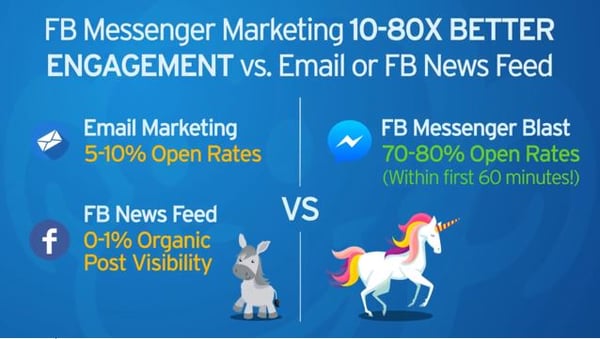Last week the marketing team at engineering.com had the pleasure of attending Inbound 2018 in Boston. I’ve attended the last three Inbound conferences, and I have to say that I walk away each time feeling totally dazed by the sheer onslaught of great ideas I’m exposed to.
This year’s event did not disappoint, and so in hopes of de-dazing myself and helping a few of my fellow marketers out there (like you!), here are the three most important lessons I learned at Inbound 2018.
 On the left, Andrew at the end of Inbound.
On the left, Andrew at the end of Inbound.
On the Right, Andrew at the end of this blog (hopefully).
Also, very public proof that Andrew is indeed a huge nerd.
Images Courtesy of wizards.com
1. It’s ABM + Content Marketing, Not ABM vs. Content Marketing
I’m happy to report, after attending a stellar talk focusing on ABM from Sharon Gillenwater, that Account Based Marketing is not a content killer, but rather a content champion.
Sharon’s business, Boardroom Insiders, is helping companies crack big contracts by thoroughly understanding their targets through in-depth executive research and is concentrated in the software industry. As such, I was eager to learn what they were doing, since their business aligns with that of engineering.com and many of our readers.
In Sharon’s presentation she outlined her company’s three-step ABM implementation:
- Account Research
- Messaging & Content
- Launch, Follow-up & Refine
Content is the tool that launches Sharon's ABM strategy. It is first used as a means of surfacing contacts open to your solution at the target company you wish to onboard. When Boardroom Insiders ran their first campaign, they used LinkedIn Ads to promote an eBook they had written specifically for the company they were going after.
Contacts who downloaded the eBook were then given a personal follow-up through LinkedIn’s InMail system. Sharon found that this approach led to both speedier engagements and—more importantly—higher quality engagements.
Sharon’s results are supported by research from LinkedIn that shows that when a contact is first exposed to a company’s content and then engaged with through Inmail, there is a 150% lift in engagement from a 16% response rate to 40%.
The program wasn’t a one-and-done, however. After initial contact, those who had engaged were retargeted with even more company specific content – in one ad that Sharon discussed, they used a quote from the target company’s CEO in the LinkedIn ad itself to seize their target’s attention. Regular response and follow-up was a priority, with each highly valuable prospect being nurtured with appropriate content and attention until the company closed the deal.
You Might Also be Interested in Reading: Account Based Marketing For The Engineering Marketer by John Hayes.
2. Ranking Is Tougher Than Ever, Featured Snippets Are a Middle Ground
Google has over 20 Search Engine Result Page features designed to help people find information that circumvents organic click-through to your site. At this year’s Inbound, Featured Snippets seemed to be the feature marketers wanted to talk about.
In his presentation on Featured Snippets and SEO, Adam Piotrowski presented research showing that as of now, 12.2% of all queries are met with a featured snippet. What’s troubling for marketers is that once introduced, a featured snippet drops the organic CTR of a #1 result by 7%.
Unable to beat Google at their own game, marketers are now tasked with trying to work within the framework Google provides. Thus, to beat the featured snippet, you must become the featured snippet.

For marketers wanting to achieve featured snippet success, Adam suggests the following:
- Optimize your page so that it reaches the top 5 for the query you want to compete for, and which is relevant to your business. 94% of featured snippets come from the top 5 results, 6% comes from results #6 to #10, and everything else is ignored.
- Use a tool like SEMRush to determine the featured snippets you currently hold and optimize your pages to safeguard them.
- Use Google’s related questions to identify other featured snippets relevant to your site and target those for acquisition.
As humans who use Google, we should be all for their efforts to try and streamline search, but as marketers it still stings that they’re doing so much to push organic search further and further below the fold.
For now, with featured snippets, Google has given us a middle ground between organic results and features that completely circumvent our landing pages. While it’s not ideal for marketers, it’s an opportunity that would be costly to ignore. Become the featured snippet.
3. B2B Chatbot Messaging May Be the Next Facebook of Marketing Opportunities
It’s no secret that just about every marketing site is dabbling with on-site messaging and chatbots. However, what I’m referring to are chatbots connected to users through channels like Facebook, WhatsApp or iMessage.
Messaging bots working through chat platforms harkens back to the early days of email. MobileMonkey, founded by Larry Kim, the godfather of Facebook ads, offers up the following comparison:
 Image Courtesy of: Mobilemonkey.com
Image Courtesy of: Mobilemonkey.com
Not only are messaging chatbots exciting because of their incredibly high engagement rates, but they can be built out to gather information and tailor deliveries to contacts. For instance, you could have your bot follow up after delivery to ask if what you sent—be it content, an invite to a webinar or a request for them to participate in a survey—was helpful. Build up enough interaction data points and you’ll have a pretty full profile of your prospect’s interest. When pooled across prospects, you’ll also have a fairly exciting data-set to sift through for insights that could lead to additional sales.
The incredibly low cost of these bot platforms is what makes me think of them as “the next Facebook.” Early on, Facebook was incredibly cheap to use and the engagement was through the roof. That’s where things stand with messaging chatbots today.
I’m eager to see what a platform like engineering.com, with a Facebook following of 1.4M people, is able to achieve. Keep an eye out for a follow up blog later this year.
So, that’s my wrap for Inbound 2018. Were you there? If so, what were your biggest take-aways? Let me know in the comments below.
P.S. There is still time to provide your input on How Engineers Find Information 2019. Do you have a question you're really want answered about your prospects? Let us know and we'll consider it for inclusion in this year's survey.
Thanks for reading and sharing,
Andrew






